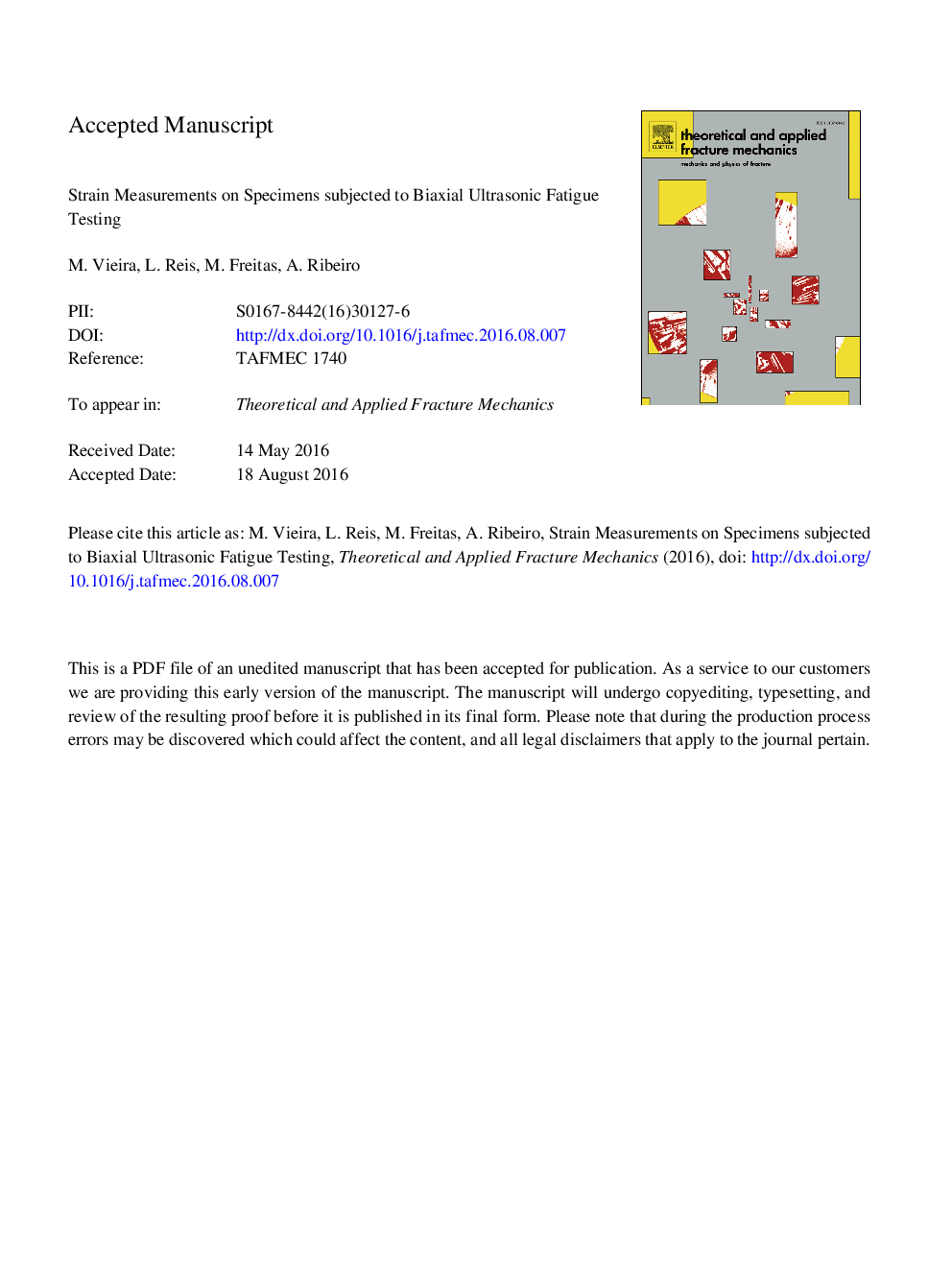| Article ID | Journal | Published Year | Pages | File Type |
|---|---|---|---|---|
| 5019812 | Theoretical and Applied Fracture Mechanics | 2016 | 25 Pages |
Abstract
The very high cycle region, up to 10E10 cycles of the S-N fatigue curve has been the subject of intensive research on the last decades, with special focus on axial, bending, torsional and fretting fatigue tests. This can be achieved using ultrasonic exciters which allow for frequency testing of up to 30Â kHz. Still, the multiaxial fatigue analysis is not yet developed for this type of fatigue analyses, mainly due to conceptual limitations of these testing devices. In this paper, a special designed cylindrical specimen is tested at 20Â kHz on a bi-axial loading condition, with axial and torsional components on the specimen throat, using a new biaxial ultrasonic fatigue testing machine. The characterization of the specimen loading is measured by rotational and axial laser transducers at the bottom of the specimen and additionally by strain gauges applied at its throat. Strain gage data from very high frequency excitation is compared to strain gage data obtained from equivalent specimen geometry at 0.5Â Hz in a biaxial servohidraulic machine. Results indicate good correlation between strain measurements for both fatigue tests at low and ultrasonic frequency tests. This data will help to extend very high cycle fatigue curves for biaxial loading conditions and serve as groundwork for future research on this field.
Related Topics
Physical Sciences and Engineering
Engineering
Mechanical Engineering
Authors
M. Vieira, L. Reis, M. Freitas, A. Ribeiro,
